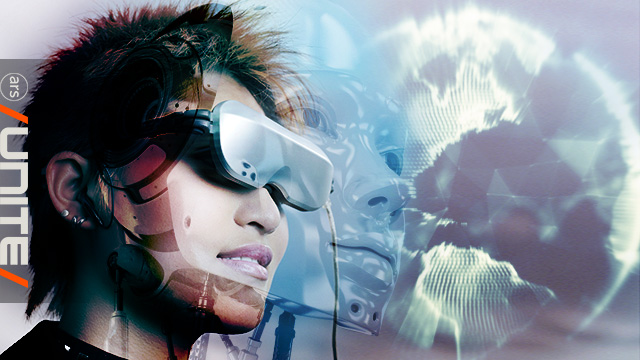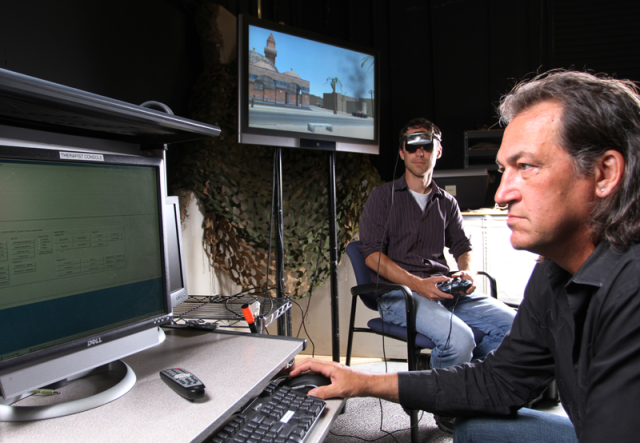
When Oculus almost single-handedly revived the idea of virtual reality from its ‘90s vaporware grave, it chose the 2012 Electronic Entertainment Expo as the place to unveil the first public prototype of the Rift headset. The choice of a gaming convention isn’t that surprising, as the game industry has been the quickest and most eager to jump on potential applications for VR. Gaming has already demanded the majority of the attention and investments in the second VR boom that Oculus has unleashed.
But just as the Rift itself is the result of what Oculus calls a “peace dividend from the smartphone wars,” other fields are benefiting from virtual reality’s gaming-driven growth. Creators all over the world are looking beyond entertainment to adapting head-mounted displays for everything from psychotherapy, special-needs education, and space exploration to virtual luxury car test drives, virtual travel, and even VR movies. The well-worn idea of “gaming on the holodeck” may be driving much of the interest in virtual reality, but the technology’s non-gaming applications could be just as exciting in the long term.
When he announced his company's $2 billion acquisition of Oculus earlier this year, Facebook’s Mark Zuckerberg noted that "while the applications for virtual reality technology beyond gaming are in their nascent stages, several industries are already experimenting with the technology.” Some of those industries have actually been experimenting for decades, though. Even during virtual reality’s first moment in the spotlight in the 1990s, some people were examining how the primitive VR systems of the time could be used for research and healing.

Dr. Albert “Skip” Rizzo at the University of Southern California’s Institute for Creative Technologies said he was inspired to look into digital solutions for his brain injury rehab patients in the early ‘90s when he noticed that a patient who had trouble staying motivated for therapy had no trouble getting engrossed in a Game Boy copy of Tetris during breaks. Over the next few years, Rizzo reached out to colleagues on the computer science side to see if therapeutic training in virtual reality simulations could lead to improvements real-world skills. Rizzo has now spent nearly two decades of research proving that is indeed the case.
The virtual reality technology available when Rizzo got started on this path was expensive and not very convincing, of course. Rizzo remembers the first virtual reality system he used, an Immersadesk 3D projection system that cost $125,000. The first head-mounted displays in those early days cost $10,000, had a 640x480 resolution, and required a pricey SGI workstation to handle rough head tracking and simulation-level 3D modeling.
Surprisingly, though, even these early attempts at virtual reality proved “real” enough to provide engaging therapeutic environments for those suffering from PTSD and other ailments. Rizzo remembers putting Vietnam veterans through a “primitive” Virtual Vietnam program in 1998, with very rough approximations of foliage, helicopters, and the like. “When they would go through it and they would come out, I'd say, ‘Bill, what did you see in there?’” Rizzo recalled. “And he'd go, ‘Oh, well there was a rice paddy and Vietcong coming from the jungle and there was a water buffalo there.’ Well, none of that was in the simulation… they filled in the gaps with their own memories. You can provide just enough so that people react to it as if it's real.”
Even with today’s technology, a virtual reality version of a battlefield isn’t going to be as authentic as immersion therapy in the real world. Still, VR immersion therapy has been shown to be just as effective as “en vivo” real-world immersion therapy in treating everything from common phobias to deep-seated anxiety. Dr. Marat Zanov, a clinical psychologist and director of training at VR therapy firm Virtually Better, points to hundreds of clinical studies that have shown virtual therapy is “at least as effective as a real approach.”
VR therapy is also often much more convenient and/or cheaper than similar exposure therapy would be in the real world. “Think about our PTSD veterans,” Zanov said. “We cannot really take them back to Afghanistan or Iraq and place them in a firefight. In the olden days, you would use imagining exposure, have the veteran recreate the traumatic event in their memory as if it were happening right now. That’s fine and dandy, but it takes a lot of effort on the part of the psychotherapist, and some patients have problems with imagining… With a virtual environment, we really get them a bit closer a bit quicker to that trauma.”
Zanov also pointed out the economic benefits for treating patients with a fear of flying, for instance. Before, exposure therapy for such a patient might require buying two round-trip tickets—one for the patient, one for the clinician—on perhaps five to 10 costly trips. “When you just use the virtual environment, it costs you nothing.”
While researchers have been proving the clinical value of virtual immersion therapy for decades now, the new wave of virtual reality technology has the potential to take the concept from the realm of academic research to widespread adoption by doctors and patients.
“What’s happening in today’s world is we’re bringing the costs down to make it affordable to all therapists,” Virtually Better CEO Michael Jacobson said. “Up until the last year, it was more of a research tool than something available to practicing clinicians. It wasn’t convenient; it wasn’t easy to use. To deliver a system for the rank and file was expensive. Just the mention of the Oculus has changed the world so there are many, many ways to provide virtual worlds at much more effective price points than there were 15 years ago. Now we’re seeing huge inquiries about putting it out in the field and a lot of people putting them out in the field. People have been studying it, looking at it, but now they’re going to be able to deliver it.”
Rizzo agrees that with the rise of Oculus and other relatively cheap, high-quality headsets, “the technology has caught up with the vision” for VR therapy. Rizzo remembers how, back in 2004, he tried to push a clinically proven VR program to treat attention deficit disorder. “But the psychologists were too uptight about it,” he said. “They thought it was complicated. They thought it wasn't going to work. They didn't understand it. They didn't want to spend $2,000 dollars.”
When Rizzo presents similar virtual therapies at psychology conferences today, things couldn’t be more different. “I don't have to spend half my talk on the front end trying to explain what virtual reality is and trying to persuade people that it's not science fiction, that it really is a viable technology that offers significant advantages over standard media delivery systems,” he said. “People get it right out of the gate. They're aware of it.”
reader comments
38